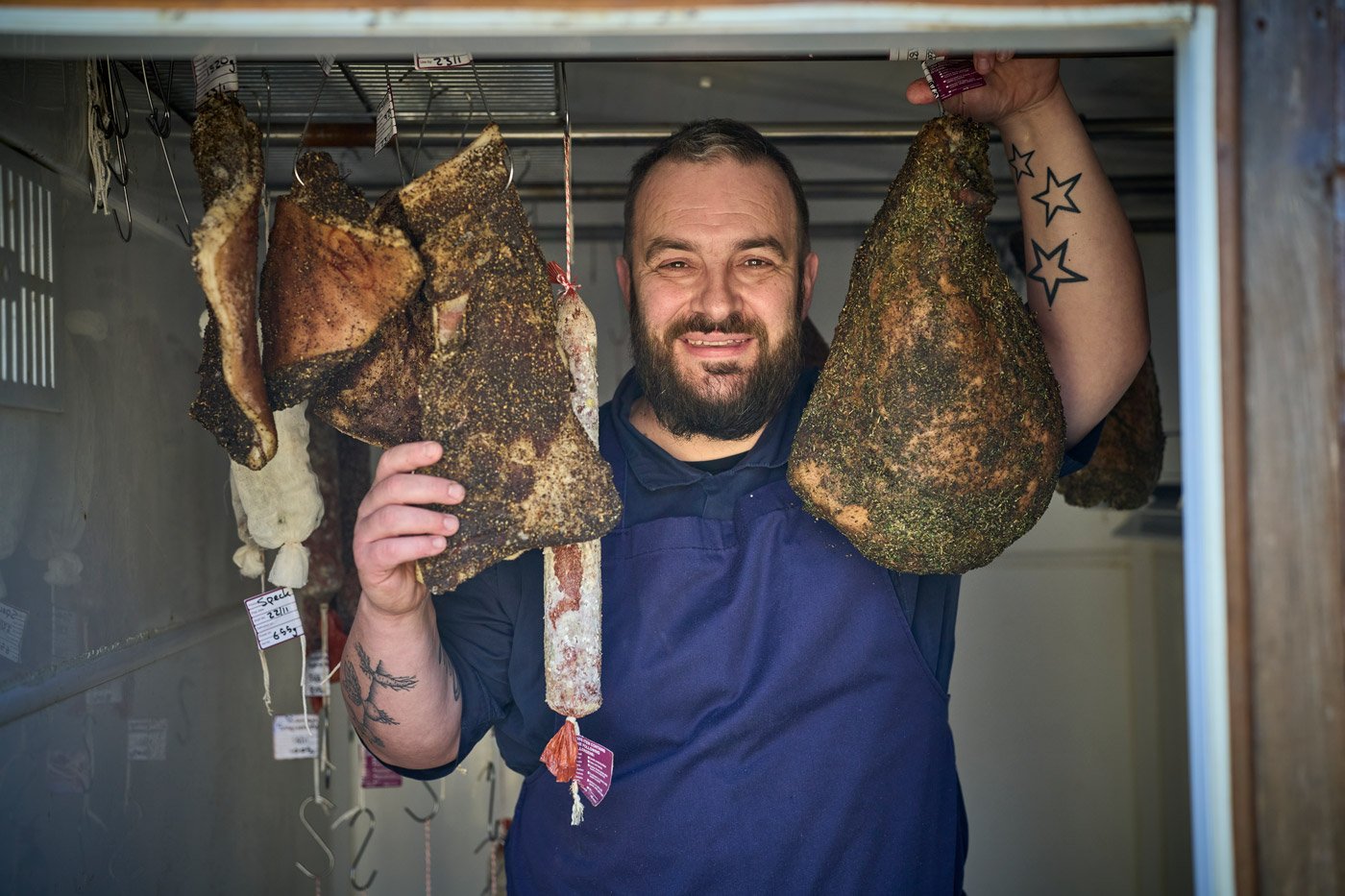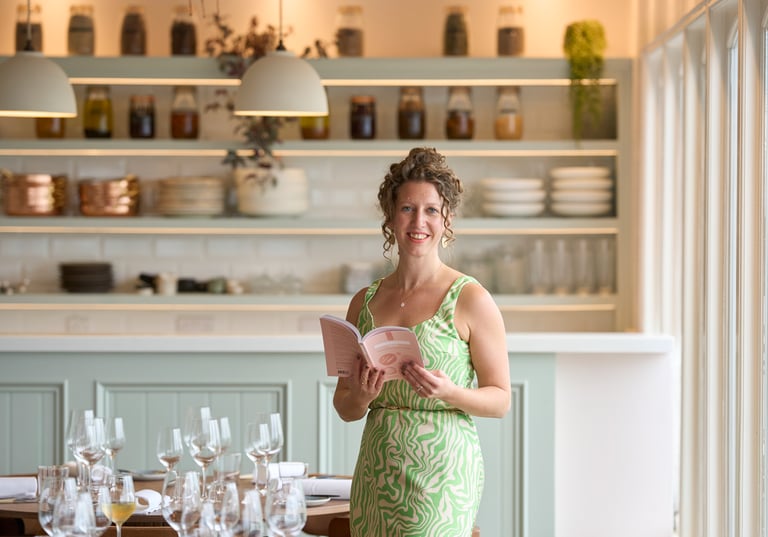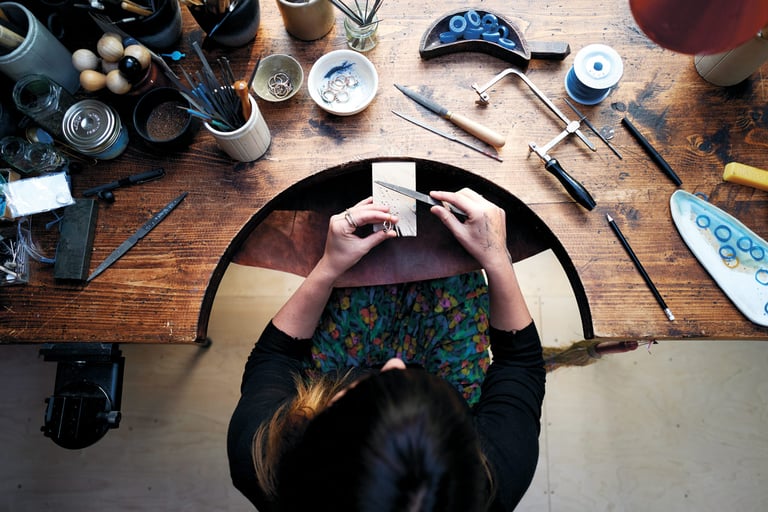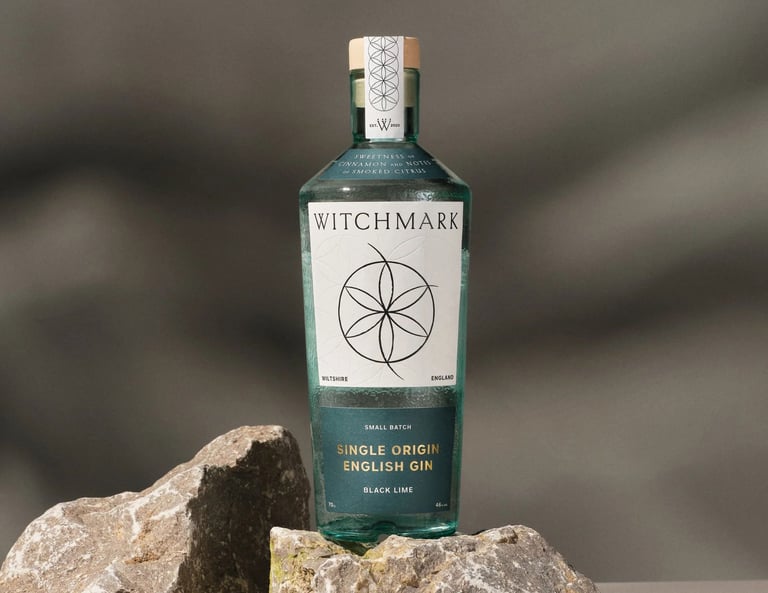Iford Manor Kitchen’s executive chef Matthew Briddon on the slow alchemy of turning salt, cider and estate-raised meats into extraordinary charcuterie
In the garden at Iford Manor Kitchen in Wiltshire, executive chef Matthew Briddon’s curing cupboard sits surrounded by glorious greenery. Inside the temperature-controlled unit, rare-breed and estate-reared meats hang at various stages of transformation. It’s a slow alchemy of salt, time and patience that creates charcuterie gold from a few simple ingredients.
‛What I really love about charcuterie is that you can take pork and just add salt to it. Then it’s all about technique, time and ageing. It’s just amazing,’ says Matthew.
A judge for both the World Charcuterie Awards and the British Charcuterie Awards, Matthew is a seasoned authority on this ancient craft. His curing cupboard – held at a precise 12.5C with 60–65 per cent humidity – houses charcuterie aged for up to three years. Alongside pork, he also cures lamb and beef from the Iford Estate.
‛We use our own lamb and beef, which is a bit different from the more traditional pork. Lamb charcuterie is definitely not the norm,’ he says.
Salt of the earth
The process begins with salting. ‛The amount of salt used is usually three per cent of the weight of the meat. Then we leave the legs in salt for three days per kilo,’ Matthew explains. Once salted, the legs are rinsed – but not in wine, as is traditional. Instead, Iford’s house-made cider is employed.
‛It sterilises the meat and protects the outside while adding flavour,’ says Matthew. Further flavour is added by rolling the meat in herbs and seeds harvested from the estate’s gardens. ‛We use things like fennel pollen and rosemary when it’s in abundance. I dry the herbs and seeds, then make them into a powder.’
Mastering the art
While the idea of curing meat at home may be tempting, Matthew is clear it isn’t something to try without experience. Curing requires precise control of temperature, humidity and time, which can be difficult in a domestic setting. Matthew has been crafting charcuterie for a quarter of a century and undertaken numerous specialist courses to become a master charcutier.
At the restaurant, his cured meats aren’t confined to charcuterie boards. ‛I like using it to enhance dishes instead of adding salt,’ he explains. ‛It has a lot more uses than just being thinly sliced and served on a plate. I like to introduce it into dishes like hispi cabbage or roasted tomatoes.’
When it comes to serving charcuterie, Matthew asserts that temperature matters. ‛Charcuterie served cold is not a good thing; if it isn’t at the right temperature you don’t get the mouthfeel. Nobody likes to eat cold fat!’
Natural methods
Matthew avoids synthetic additives, opting instead for natural methods when ageing meat: ‛We use natural nitrates. Nitrates are actually found in ingredients like tomatoes and spinach, and we use those instead.’
This makes the process slower, but he accepts that good things take time. ‛We could do this process with an artificial chemical in about three weeks, but it takes six months or more when we use spinach and mushroom fungi.’
A long tradition
The chef doesn’t see himself as reinventing the wheel. Instead, he recognises that his work is part of a long culinary lineage that relies on intuition, technique and a deep respect for ingredients.
‛Charcuterie brings umami to dishes and builds flavour; it makes you salivate. It’s been made for hundreds of years – and there’s a reason it’s stayed around.’
Feeling inspired?
Join Iford’s fermentation workshop on January 21, led by Matthew. The seasonal workshop will teach you all you need to know about fermenting the best of the season’s vegetables and fruits to craft your own drinks, kimchi, sauces and more.
Includes refreshments, a delicious lunch and materials and ingredients. Book here.
Read our interview with the custodians of Iford Manor Estate












